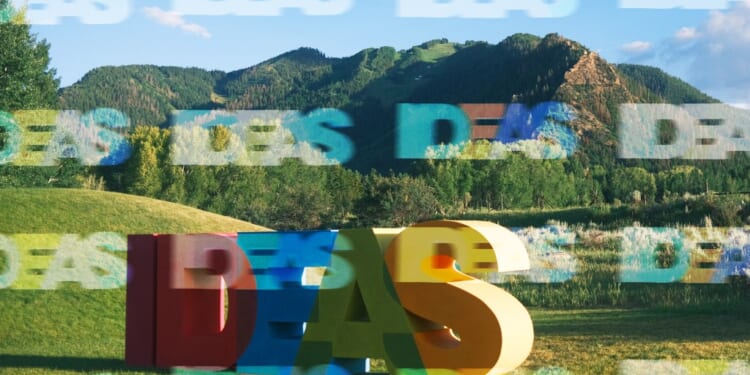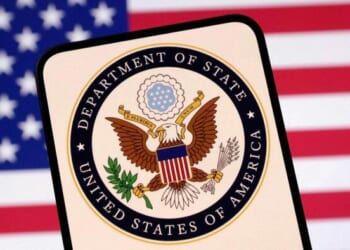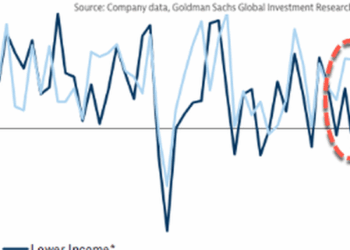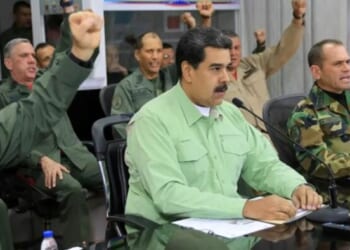ASPEN, Colorado—The Silver Queen gondola usually ferries skiers to the top of Aspen Mountain in a little under 20 minutes. Despite its beginner-unfriendly reputation, the 11,200-foot peak doesn’t offer the best ski terrain in the valley, but its position in the center of downtown makes it a favorite among tourists staying in one of the luxury hotels dotted throughout the ultrawealthy ski destination. It’s also a popular summer ride, when a moderately expensive round-trip lift ticket will grant you access to the Sundeck, the mountain’s summit-top restaurant, where you can enjoy overpriced beer and mediocre food while looking out over a priceless and not-so-mediocre Rocky Mountain landscape.
On this summer night, however, a sign reading “Closed for Private Event” blocks the entrance to the glass-walled base station.
Coiling across the plaza, tonight’s gondola line is mostly full of the blue lanyards that identify speakers at the 20th iteration of the Aspen Ideas Festival, a yearly gathering of cultural and intellectual elites at the terminus of the Roaring Fork Valley. Ahead of me in line, dressed in a deep navy suit and brown leather cowboy boots, is Georgia Gov. Brian Kemp, flanked by his wife and a small entourage of aides. Directly behind me is New York Times architecture critic Michael Kimmelman, a moderator and speaker at this year’s festival. Further down is a posse of various CEOs, musicians, and artists, all waiting patiently for the upward procession to begin. Aspen is always a who’s who town—it’s not uncommon to bump into the likes of Kurt Russell, LeBron James, Kanye West, or Jeff Bezos on any given day. But that’s especially true this week, and even more so tonight.
As we enter the gondola’s red and black capsules, staff members hand us each a glossy blue cue card marked with several ice-breaking questions for the ride up. I’m sharing my car with Olivia White, a former MIT physicist turned director of McKinsey & Company’s economics research group. She’s participating in a roundtable later in the week on well-being and productivity in the workforce, and as the small mountain town disappears beneath us, our card prompts us with several questions like, “What’s something you’ve unlearned over the past few years?” and “What place has changed your perspective—and how?”
At the top, we’re ushered through the large doors of the Aspen Mountain Club—a private clubhouse operated by one of the town’s most prestigious hotels. There, a large balcony, assisted by several well-stocked bars, hosts the kind of mingling, networking, and storytelling that defines the festival. I talk briefly with Kimmelman about his favorite neighborhoods in New York City, then strike up a conversation with Ella Emhoff who, as the stepdaughter of Kamala Harris, became a microcelebrity of her own during the 2024 presidential campaign.
After a quick chat with MSNBC’s Jonathan Capehart, I head back into the clubhouse, dodging several black-suited bodyguards along the way. They’re here for one of the festival’s more interesting guests, former Israeli Prime Minister Ehud Olmert, who crossed the Atlantic to speak to attendees about the U.S. military’s surprise attack on Iranian nuclear facilities that took place only several days before. “We get more black truck security caravans in this valley than anyplace in the world that comes quickly to mind except Washington D.C. and the Vatican City,” Hunter S. Thompson, who lived just outside of Aspen for decades, once wrote.
At dinner we each take our seats at assigned tables arranged by professional planners who have, supposedly, grouped us together deliberately. My table seems to be linked by a common interest in psychology and behavioral science. To my right is Sarah Newman, the founder of a mental health network that addresses the emotional burdens of climate change, and to my left is Julia Dhar, our preassigned discussion leader and the director of Boston Consulting Group’s behavioral economics initiative. We’re also joined by Stuart Brown and Mia Sundstrom of the National Institute for Play and USA Today sports columnist Christine Brennan, whose new book on Caitlin Clark and the revolution in women’s sports was being released the following week.
As the evening came to a close, we each collected a framed copy of photographs taken of each of us earlier, then retreated back down in gondolas. When away from others, I pulled out my cellphone and immediately dialed my sister. “That’s gotta be one of the weirdest evenings of my life,” I told her.
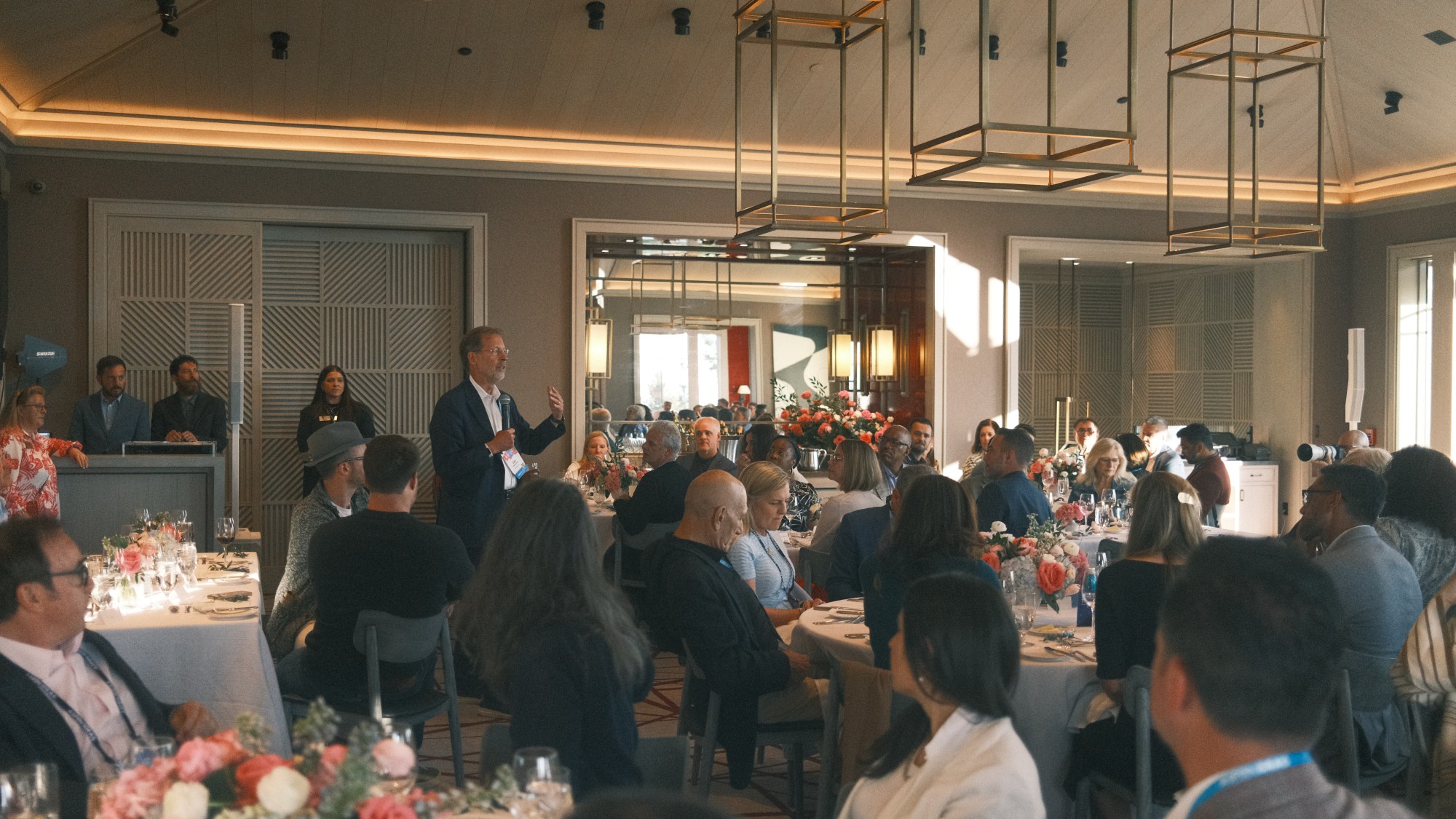
The ‘Aspen Idea.’
The festival is one of those strange mountain town events, like the World Economic Forum’s annual meeting in Davos or the Federal Reserve’s Jackson Hole Economic Policy Symposium, that prompt questions like, “What in the world are they doing out there?” and, “Just how out of touch are they?” from everyday Americans who see billionaires, academics, and journalists—often progressive power players—hobnobbing in one of the world’s richest towns. Those are understandable questions: While the festival is technically open to anyone who cares enough to buy a ticket, a pass for just one of the festival’s four-day itineraries will set you back around $5,000, and access to the festival’s full 10-day run costs triple that.
For many Americans, the most prominent description of Aspen might come from the 1994 comedy Dumb and Dumber, where Lloyd Christmas (played by Jim Carrey) describes the town as “some place warm, a place where the beer flows like wine, where beautiful women instinctively flock like the salmon of Capistrano.” While the beer certainly does flow like wine at the Aspen Ideas Festival, the week isn’t just one big booze-filled networking event for America’s elite. In the meadows beneath the Rocky Mountains’ own billionaires’ row, the Aspen Ideas Festival aims to be a place where people from across America come together to discuss big issues with open minds and uplifted spirits.
Or at least that’s what it’s trying to be.
But “weird” would certainly be near the top of the list of words I’d use to describe it. Or perhaps uncanny. That’s partly because of the people you encounter—on any given day, you might go directly from having a quick chat with BlackRock CEO Larry Fink to washing your hands in the bathroom next to former National Security Adviser John Bolton (before the FBI search of his home and the resultant indictment), followed by a trip to the bar where you bump into Steve Kerr, head coach of the Golden State Warriors.
But it’s not just the people who make the experience uncanny. From the outside, the Aspen Ideas Festival seems to mostly be about, well, ideas. Dozens of academics, politicians, business executives, and artists give talks each day on everything from the future of nuclear energy and the importance of artificial intelligence to the growth of women’s sports and the role of psychedelics in neuroscience.
But ideas are just one component of a much larger and stranger contraption.
A typical morning at the Aspen Ideas Festival begins long before guests gather at the all-attendee general assembly that kicks off each day’s itinerary. Walking through the Ideas Festival’s campus in the early hours, you’re likely to come across a gaggle of yogis downward dogging on the sculptural grass mounds of Anderson Park, a troupe on their way to a guided walk down the Rio Grande trail, or a garrison of fly fishers preparing for an assault on the Frying Pan River’s unsuspecting cutthroat trout.
These kinds of “extracurricular” activities aren’t only for fun, they’re a core component of the festival’s attempt to introduce the “Aspen Idea,” a guiding principle for both the Aspen Institute and the town itself, into its daily repertoire. “The Aspen Idea, of which I consider myself an ardent practitioner, is the idea of nurturing the whole person,” Paul Andersen, a longtime Aspen journalist who recently published a book on the birth of the Aspen Idea, told me. “It’s the so-called body, mind and spirit. It’s like looking at a three-legged stool where the human being is supported by body, mind, and spirit, and harmonizing those three elements of life is essential for equilibrium.”
The origins of the Aspen Idea and of the Aspen Institute are one and the same. While this year marked only the 20th iteration of the festival itself, its legacy and influence originate much further back—to the postwar period when the world’s top minds were contemplating the tragic fallout of global conflict, genocide, and the atom bomb. A group of intellectuals and artists first gathered in the meadows that now make up the Aspen Institute’s Rocky Mountain campus during the summer of 1949, invited there by American industrialist Walter Paepcke for a celebration of the 200th birthday of German polymath Johann Wolfgang von Goethe. There, influential figures like Albert Schweitzer, Thomas Mann, and Thornton Wilder addressed the civilizational darkness that emerged from World War II and their remedies for it. It was from this gathering, known within the Institute as the legendary “Goethe Bicentennial,” that the Aspen Idea, a framework for the pursuit of the good life, first emerged.
In a town like Aspen, the first leg of the stool, the body, is pretty straightforward. Skiing, hiking, and endless physical activity are everywhere around you. The mind, meanwhile, is mostly concentrated in the Aspen Institute’s seminars, festivals, and workshops, not to mention the many lectures right next door at the Aspen Center for Physics. “But the spirit is a more difficult thing to pinpoint,” Andersen noted. “To me, it is when the body and the mind are in sync and come to a common awareness of how special this place is. Then the spirit is engaged and it soars with the recognition of what is possible here, and what’s possible here is an incredibly fulfilling life.”
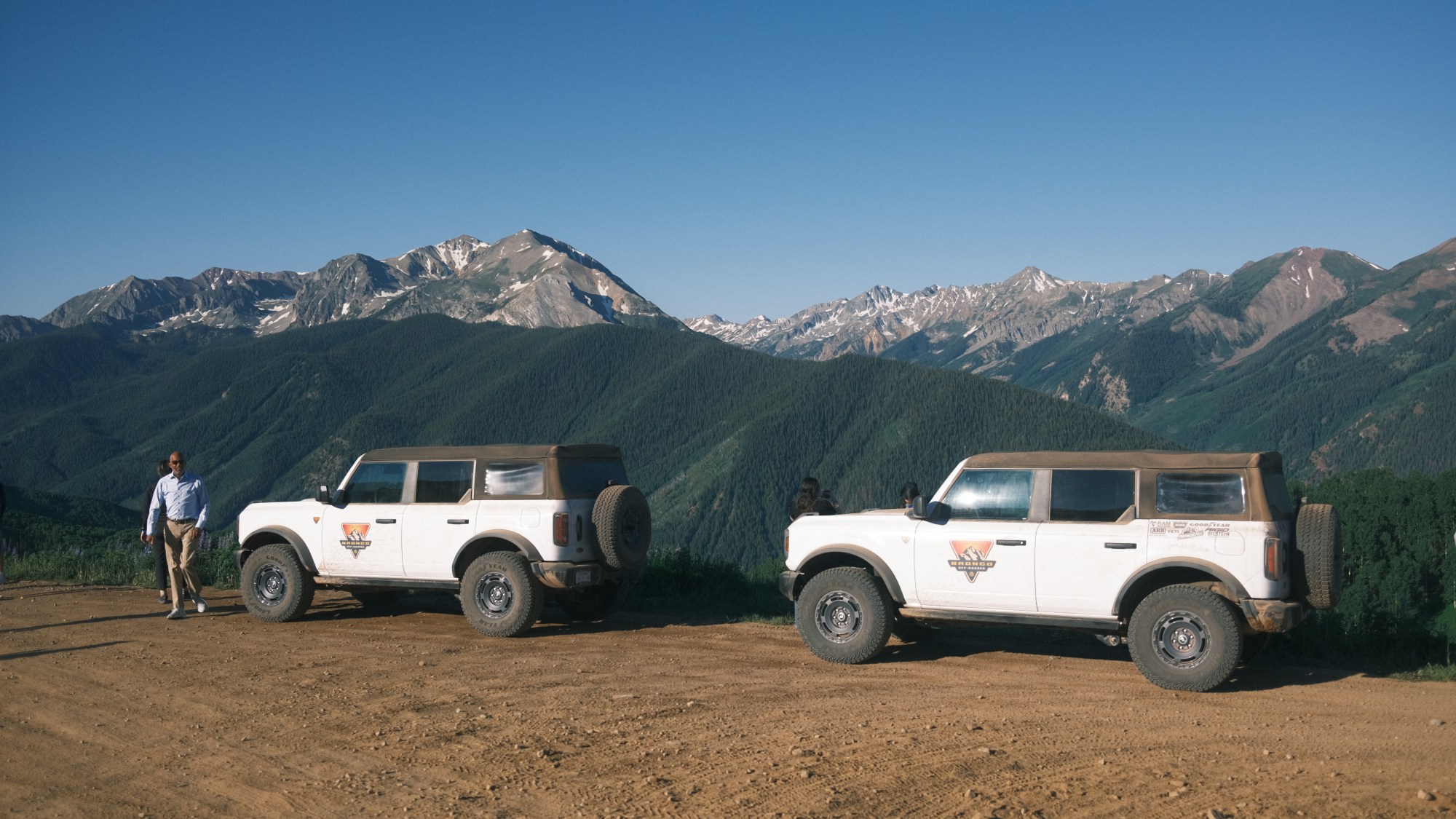
Scattered throughout the itinerary are events meant to stimulate the spirit. During the first festival session, Brooklyn-based art duo CHIAOZZA, whose colorful sculptures dotted the Aspen Meadows campus, led a collaborative collage-making workshop. Later the same day Ella Emhoff ran a knitting club in one of the festival’s pavilions. One of the strangest, and my personal favorite, was a wine tasting-like session directed by a “chocolate sommelier” where attendees tried an array of fine chocolate varieties while painting watercolor representations of how each flavor made them feel.
Mortimer Adler, one of the Aspen Institute’s founding philosophers, once described Aspen as a place where two competing triads go head-to-head: The Platonic ideals of the good, true, and beautiful, and the Machiavellian ideals of money, fame, and power. By that metric, the Ideas Festival seems to be proof that the Machiavellians are on the front foot in Aspen. But despite its profound wealth (around 80 billionaires now live or own property in the town), Aspen still hasn’t surrendered itself fully to the material wealth that blankets the valley. “It still has the good, the true, and the beautiful, there’s a real allure to the platonic,” Andersen told me. “I think a lot of the Machiavellians come to Aspen because they want to experience that sort of purity that still can be found here.”
This balance of mind, body, and spirit, alongside the pursuit of a fulfilling life, now guides the purpose of the Aspen Institute and its flagship Ideas Festival. “We want to help fulfill the purpose of the Aspen Institute, which is to ignite human potential. At the Ideas Festival, we really work so that everyone who attends—the scholars, the fellows, the speakers, the attendees, the underwriters—leave our campus and the Aspen Ideas Festival more inspired to have a greater impact on their communities and the world,” Graham Veysey, the festival’s executive director and executive producer, told me. “And we do it harkening back to the origin story of the Institute, and that 1949 gathering in the same meadow.”
Despite the festival’s high-minded goals, it isn’t always clear just how relevant the entire exercise actually is. Throughout the week that I spent wandering the Aspen Institute’s Bauhaus campus, I often felt myself wondering what exactly the festival was for. Did the ideas actually matter? Did the conversations that took place each day actually filter through the festival’s audience into their broader communities? Or, was the week designed to satiate the desire of a very wealthy group of cultural elites to feel engaged with important issues, all the while insulating them with Michelin-starred catering and Juilliard-trained musicians from the harsh realities of real America?
Intellectuals and ideologies.
While the festival excels in the variety of disciplines it offers in both activities and speakers, it’s also left somewhat wanting in its ideological diversity: Speakers, attendees, and fellows overwhelmingly share the same general social, political, and ideological frameworks.
One evening, when I escaped the festival to catch up with some family friends, an Aspen local remarked to me that the festival seemed like nothing more than “a really expensive and time-consuming way to read an issue of The Economist.” As far as the content of the sessions goes, he had a point—several sessions were even hosted by Economist Editor-in-Chief Zanny Minton Beddoes. It’s admittedly hard to escape the center-left consensus represented by publications like Politico when you’re sipping drinks at a nightcap hosted by Politico’s Jonathan Martin and Dasha Burns. But to the festival’s credit, most of its speakers and attendees are self-aware enough to recognize that they’re operating in a relatively elite bubble—one that is probably out of touch with many real Americans. “You are the exemplar, and I’m close behind, at being part of what I’ll call the Davos-Washington-Aspen consensus,” former Aspen Institute CEO Walter Isaacson said to this year’s guest curator, journalist Fareed Zakaria, in the festival’s opening session. Later during the same talk when discussing similarities between far-left New York City mayoral candidate Zohran Mamdani and President Donald Trump, Zakaria remarked that “[Trump and Mandami are] both opposed to the elite … to you and me, and pretty much everyone here.”
Many of the festival’s sessions identified this rift between the kinds of elites who populate Aspen and the everyday Americans who support candidates like Trump. Resultantly, many of the attendees and speakers seemed to be reckoning more with their own failure to build a winning ideological coalition than with what might be wrong with the masses. “Maybe [the American people] know more than we do,” Isaacson remarked at one point. “Maybe they were left behind by some of this wealth that was created and generated.”
But, at the same time, many of the attendees paying thousands of dollars to hear such talks told me they were concerned with the lack of alarm over the Trump administration’s chaotic and ambitious agenda. “In session after session, panelists were reluctant to confront the urgency of the moment and the danger we face with a government that has abandoned the rule of law and democracy as it seeks to consolidate power and dismantle the government,” one festival attendee told me. “In the effort to avoid dividing audiences, it missed the reality of the moment and was not especially useful.”
Though not universal, much of the festival’s content felt far more neutered than you would expect from a crowd that seemed overwhelmingly afraid of the direction the country was headed.
During a panel discussion of the state of the U.S. economy, Wells Fargo CEO Charles Scharf, Georgia Gov. Brian Kemp, and New York Stock Exchange President Lynn Martin all appeared to downplay the negative effects of the Trump administration’s tariffs and praise the economy’s resilience. “I’m very optimistic about things,” said Kemp who, though a Republican, has often been outside of President Donald Trump’s good graces. Martin concurred. “I think this moment in time, this last quarter, particularly the last two months, has really shown the resilience of the U.S. market, the depth and breadth of the U.S. market, and the depth and breadth of the investor base in the U.S. market,” she said.
But when the question was turned to BlackRock CEO Larry Fink, he broke from the pack and warned that many sectors of the economy would soon be on a crash course—an economic proposition that now, in retrospect, has become more and more evident. The floodgates then opened, leading Scharf to add his own, now negative, thoughts. “Businesses are willing to give this a period of time, but when you dig down into it, they’re not growing inventories, they’re not investing, they’re not hiring people, and they’re drawing up plans on what they have to do in case things get worse,” he said, with his fellow panelists now nodding along.
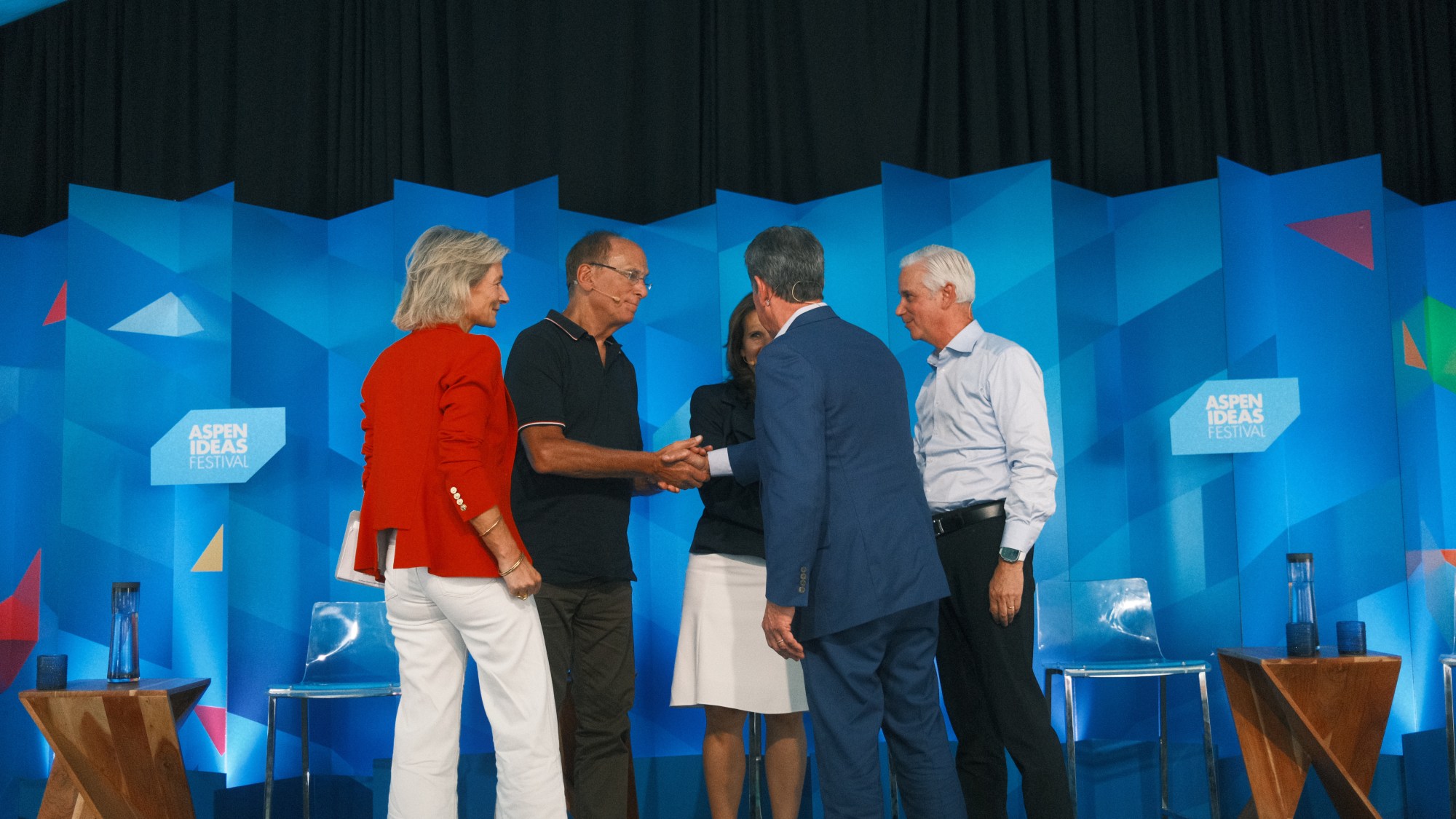
“This is really interesting, because for a moment I thought I’d landed on Planet Pollyanna,” panel moderator and Economist Editor-in-Chief Zanny Minton Beddos joked. From there the conversation turned much more critical, almost as if they were all waiting for permission to say what they really thought.
Kemp, the only notable elected Republican at the conference, was eager to poke at the overwhelmingly liberal crowd when asked about whether the country’s precarious fiscal trajectory would be worsened by the Republican-backed “One Big Beautiful Bill.” “I would just ask if you were worried about how much money Joe Biden spent,” Kemp responded, seeming to relish the chorus of boos he then received from the crowd. “I’m not trying to take a shot at Joe Biden, I’m just saying you can’t have it both ways,” he continued, to an even greater eruption of jeers.
“I took a lot of grief from some of the base of the Republican Party for going to Davos for two years, but, like, I went to spread the gospel of our conservative message, our fiscal budgeting and our economic picture, what we’re doing on energy,” Kemp told me after the session. “We can’t just sell that to our own people.” As far as the negative reactions he received, the governor didn’t seem all that bothered. “I know that some people didn’t like what they were hearing,” he said. “But it was the truth.”
Beyond ideas.
While truly dissenting voices like Kemp’s are rare at the Aspen Ideas Festival, and the gathering may leave attendees who want more combative sessions a bit wanting, my most surprising takeaway was that, at the end of the day, the ideas don’t really matter all that much. They’re occasionally interesting, and there are some sessions that do add value to the conversation, but they aren’t what people are paying thousands of dollars to get.
Rather, the thing attendees of the Aspen Festival Ideas are really after is the interaction that happens around and because of the ideas. Despite the political homogeneity, the festival’s sessions promote a culture of exchange and curiosity that dominates its social landscape. The social atmosphere that results is vibrant, even if it doesn’t flow with discussions that break outside of a center-left orthodoxy.
“I think what’s unique about the Aspen Ideas Festival is that it’s not a transactional gathering,” Veysey told me. “You don’t have people come in, do their talk, and leave. They come, they’re participating in the variety of activities that we’ve got, whether it’s the morning hike up to the Maroon Bells, or the bird watching, or the 5K guided run, and you’re running with four-star generals and media tycoons. Yet, you’re also running with the teacher of the year. And then those people are also in the audience.”
That’s where the real value comes for the festival’s attendees. Most people aren’t paying just to hear the same sorts of opinions and analysis present in the Economist or Politico, they’re paying for the privilege to actually talk to the Economist’s editor-in-chief or share a cocktail with a Politico reporter—and everyone else. While many people come to Aspen to escape, most come to the Ideas Festival to do the opposite, and that is where the festival most succeeds, as an exercise in expanding and leveraging human capital. When you put a bunch of curious and engaged people together for a week with leading experts from across business, politics, science, and culture, you’re bound to end up with some interesting conversations, even if most of those people share an ideological echochamber.
This realization hit me one afternoon when I joined around 30 other festival attendees on a short bus ride to the West End. There, we filed into the private home of a festival patron who had volunteered to host one of the festival’s book clubs—a lunch event with noted social psychologist and author Jonathan Haidt. Since publishing his book The Anxious Generation last year, Haidt has been at the forefront of both local and national campaigns to limit children’s access to technology and encourage childhood independence. The book offers both a compelling diagnosis of the mental health crisis facing America’s youth and provides some of the frameworks parents can use to push back.
Haidt spoke to the room for about 30 minutes, outlining his approach to social science and the key takeaways from his book. When he paused for questions at the end, almost every hand in the room went up in unison. What followed was more than an hour of conversation where parents were able to discuss with Haidt and each other the challenges, successes, strategies, and uncertainties facing them and their children. Haidt gave personal advice to parents’ specific circumstances, explained directly to young adults the importance of social connection, and helped the group brainstorm ideas for how to apply his research to their own families. It didn’t feel like a conference, symposium, or lecture; it felt like a community meeting.
It’s these kinds of events where the Aspen Ideas Festival thrives—the intimate gatherings where curious people are given the opportunity to learn from others who have dedicated their lives to a subject, interact with them directly, and take something meaningful away. It isn’t often that you’re given the chance to talk to someone like Eric Ripert about his favorite restaurants in Paris, and even less often that America’s most famous French chef offers to help you book a hard-to-get table for an upcoming trip, but that’s exactly the sort of interaction that happens every day at the festival.
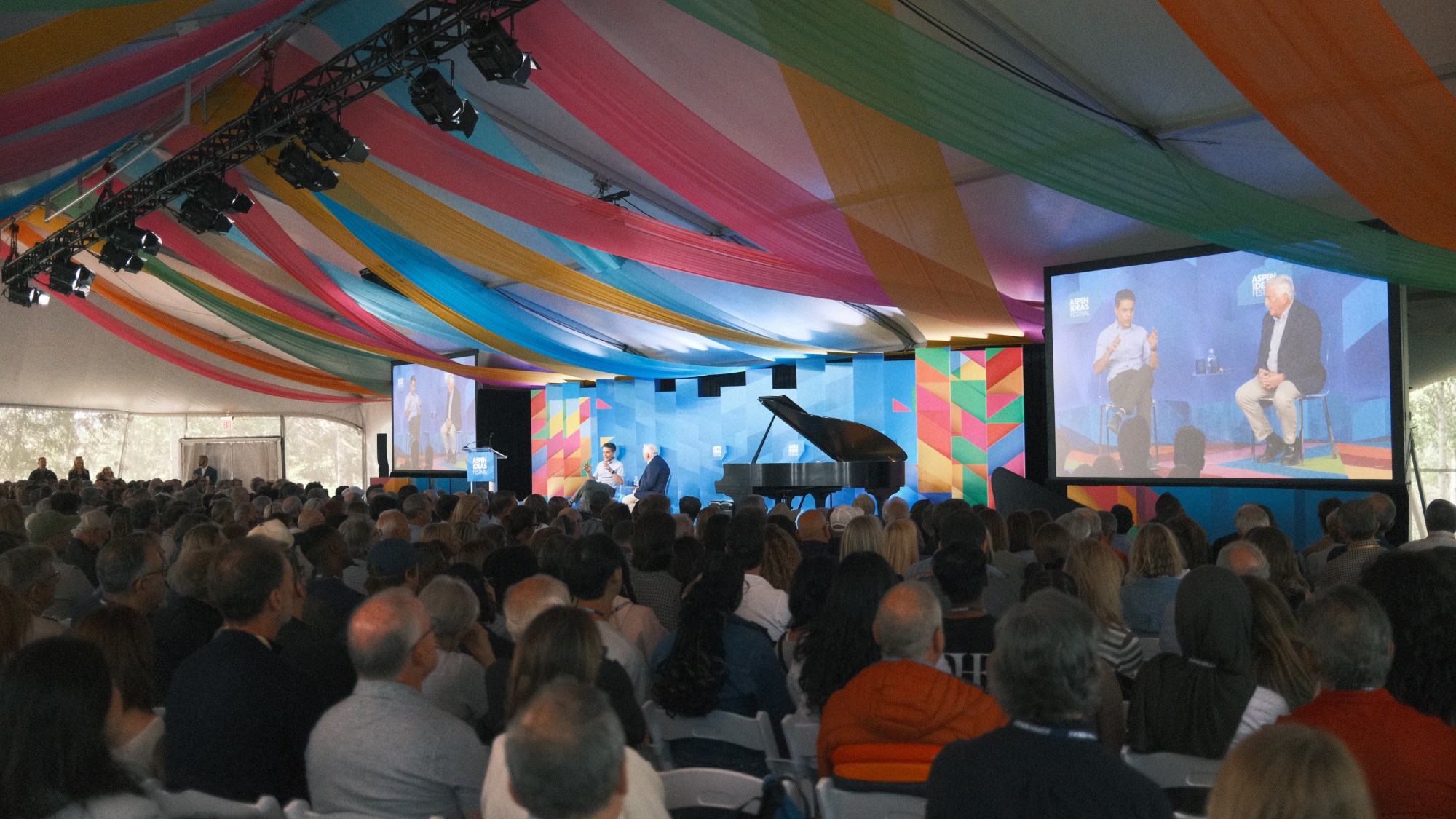
Regardless of its merits, there is still an air of escapism to the festival—a cognitive dissonance that undergirds the entire experience. In the months since, I’ve often looked back at just how surreal the week was, particularly in the context of the political moment that loomed over it. Many of the fears shared so widely among the festival’s attendees—prolonged tariffs, mass deportations, the stretching of presidential norms—are just as relevant, if not even more immediate, today as they were back then. America’s progressive elite has been hard at work challenging the Trump administration in the press, courts, and streets. But only a few months ago, many of those same people seemed detached—even if only temporarily—from the political realities they faced. At the end of the day, the sorts of people who find themselves in Aspen for this uncanny week each June are also the sorts who, almost universally, are doing very well in their own lives. They are intelligent, successful, wealthy, ambitious, and socially adept. When you put several thousand of those people in one of the most beautiful places on earth and surround them with good food, good music, and good booze, it might be easy for them to forget that their vision for America seems to be on the retreat.
Maybe that’s a good thing—or maybe it’s not. And maybe the entire festival with all its excesses and eccentricities is uncanny, over the top, and more than a little weird. But if you can put aside how silly the festival sometimes feels, most of us, regardless of our political affiliations, could do worse than set aside a week each year to deliberately think, converse, and learn from fellow Americans.
If you can afford the price.

